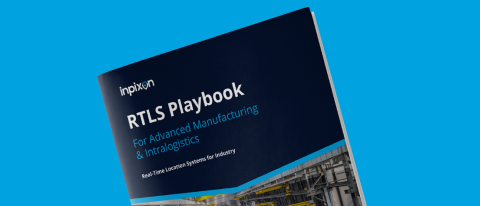In my role as an Enterprise Solutions Architect, I get to spend a lot of time helping innovative organizations envision and implement exciting Internet of Things (IoT) projects. I get to see the impact of location-aware technologies on business intelligence initiatives firsthand. If there’s one thing I’ve come to observe with increasing frequency over the last few years, it is the power of geospatial context for IoT projects.
Lately, it’s been very exciting to witness the convergence of indoor maps and machine learning in the context of autonomous navigation for drones and robots. The wealth of opportunities for applications which integrate machine learning with indoor maps are endless. With the right foundational elements in place, a new realm of possibilities is uncovered when an organization leverages map information and positioning data with machine learning.
Clarifying the Terminology
What is Machine Learning?
You’ve most likely heard of Machine Learning as a subset of Artificial Intelligence (AI). Machine learning refers to the algorithms and statistical models that computer systems use to effectively perform a specific task without using explicit instructions, relying on patterns and inference instead.
What is Deep Learning?
Deep learning is part of the broader family of machine learning methods based on learning data representations, as opposed to task-specific algorithms. Learning can be supervised, semi-supervised or unsupervised.
What is SLAM?
In robotic mapping and navigation, SLAM is the computational problem of constructing or updating a map of an unknown environment while simultaneously keeping track of an agent's location within it. SLAM stands for simultaneous localization and mapping, and while computationally heavy and not necessarily ideal for UAV operation, it is still the most popular protocol for deploying autonomous navigation in robotics.
In Context: The Building Blocks for Automated Warehouses
One of the industries that we are seeing the most experimentation in, that arguably stands to gain the most from fast implementations of automation, is manufacturing and warehousing. Autonomous navigation for robots throughout warehouses becomes achievable when drones are equipped with asset tracking tags and several key puzzle pieces are in place.
With digitized maps of an indoor environment combined with wayfinding, asset tracking, manufacturing analytics, and defined geofences, you can build a system that can leverages recursive learning with an AI model to increase efficiencies. These efficiencies could refer to enabling drones to move throughout a facility quickly without bumping into each other. Instead of relying wholly on cameras to navigate, by passing video feed into a robot’s deep neural network with geospatially accurate indoor maps, you can avoid some of the slow initial learning steps.
In this scenario, Inpixon provides many tools that can be leveraged for indoor intelligence to be applied to drone navigation. Using the Inpixon SDK, indoor facilities can be rendered in such a way as to provide meaningful, contextual information. Applying asset tracking hardware to a facility’s dynamic assets, such as drones, can collect and display positioning data on an indoor map, providing invaluable spatial context. Once these processes and systems are in place, you can use analytics and geofencing to pipe out activity data, which can be used and applied to machine learning models to make predictive decisions on how to organize smart factory robots in navigating around each other and the indoor landscape.
Machine learning is the key to not only scaling IoT projects efficiently by reallocating human labor to verifying, adjusting, and training the machine - the data that is made available with indoor mapping and positioning is vast, raw, and somewhat useless on its own. Machine learning can also be used to assess unrefined data and provide insights faster by structuring the data and applying geospatial context.
The use cases and opportunities only expand as we shift focus to other industries, and in several years, I believe that we will see autonomous navigation change aspects of healthcare delivery, transportation, and more.


-3.png?length=1000&name=Inpixon%20LinkedIn%20Banner%20August%202025%20(2)-3.png)

